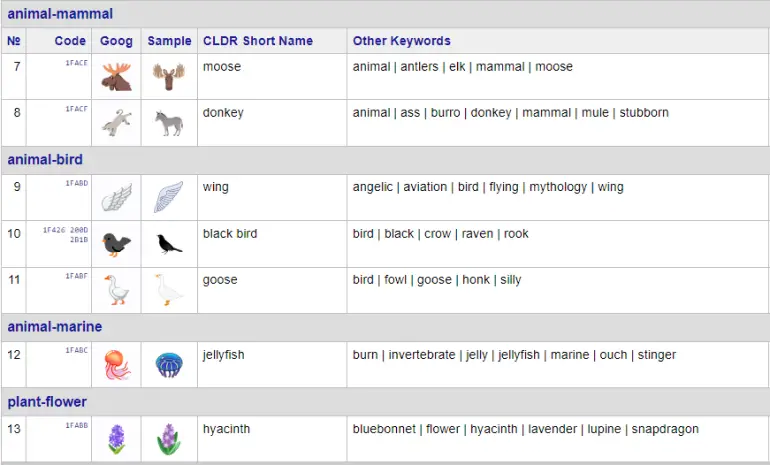Are emojis part of the Unicode?
According to the research, 92% of Internet users employ emojis. This is why very often these bright and colorful images are called the international language of communication. But if emojis are a language, then, as any of the languages, it should follow a particular set of rules.
In the early days of computing, computer manufacturers used their own encoding, often incompatible with other devices, which made text messaging incorrect. So, to improve the situation, uniform encoding rules were developed.
At first, this was the ASCII standard, based on the Latin alphabet only. Almost 30 years later, in 1991, an international system including characters from most of the world's languages was established, and is still in use today.
That is Unicode - a standard for word processing through character encoding, where each character is assigned a non-negative, universal integer number, and a way of converting those numbers for subsequent transmission is defined.

Encoding and emoji image
Characters in the standard are called code points and are prefixed with U+ using hexadecimal notation. For example: U+0041. Up to two million characters can be encoded in this way.
As of the first half of 2023, almost 150,000 characters have been converted into codes, as specified in version 15 of the Standard. This is handled by the Unicode Consortium, a non-profit organization set up by the standard's developers to promote and expand it.
Nor were they discussed for the next 10 years because the Unicode Technical Committee didn't deem emoji appropriate for inclusion in the standard. Despite the fact that millions of Japanese were already using emoticons in the early 2000s. Efforts in that direction only started in 2004.
First a request for encoding emoji in Unicode format came from Google, followed by Apple, and in 2007 the first emoji draft was developed for inclusion into the standard. Meanwhile, a complete set of 625 emoticons was released in 2010 in Unicode 6.0.
Since then, the special Unicode Subcommittee has been dealing with everything related to emojis. In particular, selects applications from the users for creation of new emojis; makes changes into the existing emojis; decides how the smileys will look like, their number as well as their code points.
What is Unicode?
In virtual communication, every piece of information is encoded. And it is this that allows users from different countries to communicate with each other, understanding the interlocutors. But this hadn’t always been the case.In the early days of computing, computer manufacturers used their own encoding, often incompatible with other devices, which made text messaging incorrect. So, to improve the situation, uniform encoding rules were developed.
At first, this was the ASCII standard, based on the Latin alphabet only. Almost 30 years later, in 1991, an international system including characters from most of the world's languages was established, and is still in use today.
That is Unicode - a standard for word processing through character encoding, where each character is assigned a non-negative, universal integer number, and a way of converting those numbers for subsequent transmission is defined.

Characters in the standard are called code points and are prefixed with U+ using hexadecimal notation. For example: U+0041. Up to two million characters can be encoded in this way.
As of the first half of 2023, almost 150,000 characters have been converted into codes, as specified in version 15 of the Standard. This is handled by the Unicode Consortium, a non-profit organization set up by the standard's developers to promote and expand it.
What is Unicode?
Some characters that later became part of the Unicode emoji sets had been in the standard since its inception. These had been dingbats, arrows, warning signs, and other similar characters that were part of fonts. The symbols had not been classified as emoji at that time and had not been assigned a separate category.Nor were they discussed for the next 10 years because the Unicode Technical Committee didn't deem emoji appropriate for inclusion in the standard. Despite the fact that millions of Japanese were already using emoticons in the early 2000s. Efforts in that direction only started in 2004.
First a request for encoding emoji in Unicode format came from Google, followed by Apple, and in 2007 the first emoji draft was developed for inclusion into the standard. Meanwhile, a complete set of 625 emoticons was released in 2010 in Unicode 6.0.
Since then, the special Unicode Subcommittee has been dealing with everything related to emojis. In particular, selects applications from the users for creation of new emojis; makes changes into the existing emojis; decides how the smileys will look like, their number as well as their code points.

